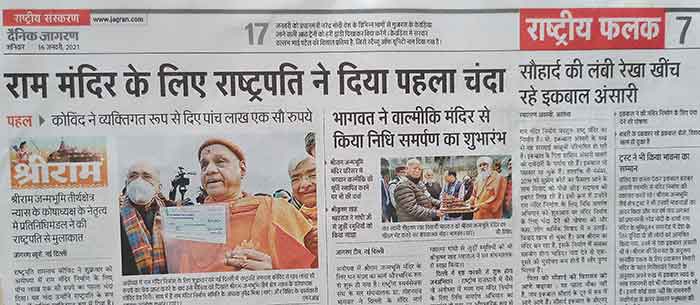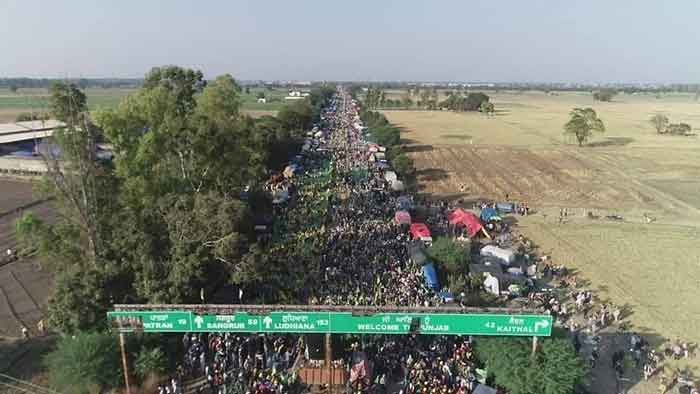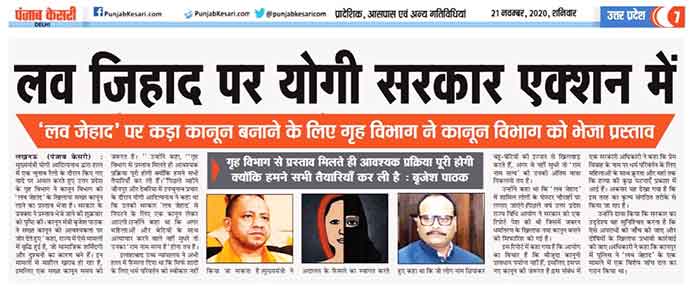
The mainstream newspapers have given very little space to the story of Gross Domestic Product (GDP) shirking by the steepest ever 23.9 per cent that it deserves. In their reporting, they have ended up solely blaming the corona pandemic for the steepest decline. Hardly has any newspaper dared to link the sharpest fall in the GDP to the Government’s economic policies.
A day after the Government released GDP figures for the April-June period (2020-21), the mainstream newspapers were occupied with news stories other than a deep economic crisis. The demise of the former President Pranab Mukherjee, the Supreme Court imposing Rs. 1 fine on lawyer-activist Prashant Bhushan, and China’s alleged attempt to infiltrate the Indian territory were made bigger news than the GDP fall.
Dainik Jagran (National), Hindustan (New Delhi), Rajasthan Patrika (Jaipur) did not make the GDP fall as its front-page lead story on Tuesday, September 1. For example, Dainik Jagran made the death of Pranab Mukherjee and the foiled attempts of Chinese forces to get into Ladakh as big stories. The story about the GDP fall was squeezed. “Corona’s attack on GDP” (GDP par corona ki mar) was Dainik Jagran’s headline. The opening paragraph of its reporting is as follows: “The figures related to GDP made public by the Government on Monday clearly show that the country’s economy has been badly hit by the corona pandemic”.
While reporting the GDP fall, Hindustan, Rajasthan Patrika similarly did their best to downplay the news about the deep economic crisis in the country. Hindustan and Patrika chose to give lead coverage to China’s story. The GDP story was published in double (Hindustan) and single (Patrika) column, respectively. Worse still, Patrika, covering the GDP fall story, wrote just six lines! Contrary to this, Patrika penned an editorial, alleging China of indulging in treachery.
Compared to them, Jansatta (New Delhi) and Navbharat Times (New Delhi) gave the GDP fall story a much bigger coverage. Jansatta, which drew on the news agency PTI, reported that the lockdown, announced amid the corona pandemic, had badly impacted the country’s economy that had already been slowing down. Navbharat Times, similarly, ended up blaming the corona pandemic for the slowdown, exonerating the Government for its role. On the same day, the newspaper also penned an editorial (Navbharat Times, p. 8) and tied to dilute the problem by saying that such a fall in GDP has been suffered by all the countries.
The Urdu newspapers also miserably failed to give due importance to the GDP fall story. Urdu newspaper Inquilab (New Delhi) gave it just a single column coverage with the following headline “big fall in GDP growth” (GDP ki shrah-e-numu men bhari girawat). The demise of Mukherjee and the fine imposed on Bhushan were made bigger stories by Inquilab. Siasat (Hyderabad), similarly, reduced it in a single column. Roznama Aag (Lucknow) also made the demise of Mukherjee a much bigger story than the GDP fall.
Sadly, the issues related to employment and economy fail to attract the attention of most of the media houses in the country. The issues which are directly connected with our survival are being suppressed. As per the figures released by the government, almost all sectors of the economy, except agriculture, are in deep crisis. The people are facing the double threat of corona pandemic and hunger and starvation due to job loss. Manufacturing (-39.3%), mining and quarrying (-23.3%), construction (-50.3%), electricity and gas (-7%), trade, hotels and transport (-47%), financial services and real estate (-5.3%) and government services (-10.3%) are worst hit. Note that this is the sharpest contraction in the GDP after 24 years.
The leading English dailies were also not entirely different from the above-mentioned newspapers. For example, The Hindustan Times (New Delhi) decided to make Pranab Mukherjee’s demise as the lead story. The GDP fall story was sent to the inside page with the following headline “lockdown hit the economy hard”. Asian Age (New Delhi) also decided to make China, Mukherjee’s demise as much bigger stories than the GDP fall.
Compared to them, The Times of India (New Delhi) and The Indian Express gave the GDP story a bigger coverage. “GDP collapses 23.9% in Q1, worst among big economies” was the lead story of The Times of India. Its opening sentences are as follows: “India’s economy posted its steepest contraction on record in the April-June quarter of the current fiscal year as the strict lockdowns imposed to ward off the spread of the deadly coronavirus infection stalled economic activity, shut out consumption and investment and led to job and income losses”. Similarly, The Indian Express (New Delhi) made the GDP fall as its lead story with the following headline, “Minus 23.9 per cent”. Note that The Indian Express wrote an editorial on the same day and did mention that for “the first time the Indian economy has contracted since the government began releasing the quarterly growth estimates in 1996-97”. However, it did not show the courage to question the establishment’s economic policy. Business Standard (New Delhi), instead of asking questions, seemed to have defended the government in its reporting: “The Central and state government tried to stem the collapse by spending more, and as a result, government expenditure grew by 16 per cent”. However, its most important story titled “GDP: Job creating sectors bear brunt of slowdown” was published on the inside page (six).
Published from Kolkata, The Telegraph was different from the above-mentioned newspapers in a sense that it not only raised important points but also included in its stories views of experts, opposition leaders as well as government’s spokesperson. The Telegraph seemed to have hit the nail on the head when it writes “A contraction in the nominal GDP will have big implications for tax collections this year, deepen job losses, spark wage cuts, depress demand, trammel production processes and lead to a ballooning fiscal deficit that will then need to be prepared over by grater borrowings”.
In conclusion, the mainstream media, while covering the GDP fall story, toed the establishment’s line of blaming the corona pandemic for the crisis. Moreover, it also focused on other issues to undermine the economic crisis. It is sad that such an occasion was missed by the media to start off a new debate on the state of the country’s economy and what has gone wrong. This should have also been an occasion to initiate a fresh debate on the economic policy of the government vis-à-vis employment and public welfare. Some experts have feared that the economic condition of the country, in the days to come, would further deteriorate as the current statistics have not included the data about informal sectors, the worst-hit areas after the corona lockdown.

(Abhay Kumar is a Ph.D. from JNU. He is broadly interested in Minority and Social Justice. Earlier, he held a Post-Graduate Diploma in English Journalism from the Indian Institute of Mass Communication, New Delhi, and worked as a Delhi-based reporter with The Indian Express. You may write to him at [email protected])
SIGN UP FOR COUNTERCURRENTS DAILY NEWSLETTER
















































